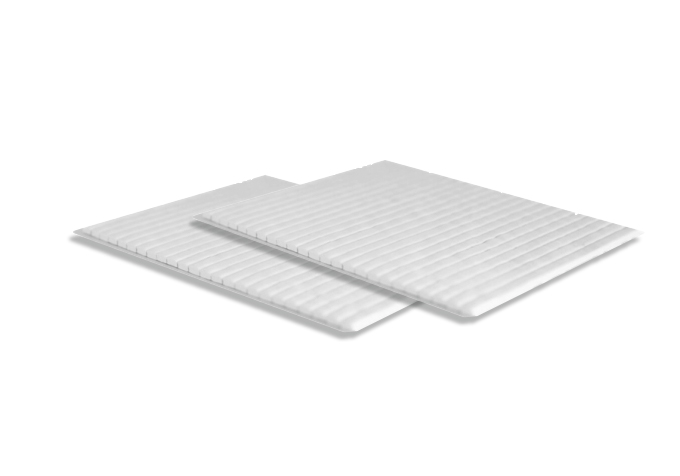RCS 320 | Rubber Cleaning Sheets
- Optimal cleaning performance
- Good flow characteristics
- No mold abrasion
Product Description
RCS 320 Rubber cleaning sheets are used to eliminate pollutants and stains formed on the mold surface. They perform well in a wide range of molds, are able to withstand a torque of 9 lb-in to 51 lb-in and have a curing time of only 250-350 seconds. These sheets offer an optimal cleaning performance with less smell and fumes. Naturally sheets are compression grade; not like you can transfer clean with sheets but let's get this out of the way for anyone still confused with the cleaning process nomenclature.
RCS 320 sheets have good flow characteristics which enable them to clean mold corners and thin gate areas easily. Unlike melamine cleaners, RCS cleaning sheets can even clean the air ventilation areas without causing mold abrasion or corrosion. At the same time there's no need for dummy lead frame or preheating, something that reduces cleaning time and leads to improved production time results and productivity. Even though they should be sufficient for deep stains, you can combine them with 2 initial shots of RCS530 to soften annoying residues and get that extra oomph.
RCS 320 Rubber cleaning sheets are well suited for production lines that work with Electromagnetic Compatibility (EMC) AND can remove contamination of molds used in the semiconductor industry for products such as as integrated circuits, diodes, transistors, and LEDs in both physical and chemical mechanisms.
Technical Specifications
| General Properties | |
| Color Color The color | White |
| Compression Pressure | 30 - 150 Kg/cm2 |
| Specific Gravity Specific Gravity Specific gravity (SG) is the ratio of the density of a substance to the density of a reference substance; equivalently, it is the ratio of the mass of a substance to the mass of a reference substance for the same given volume. For liquids, the reference substance is almost always water (1), while for gases, it is air (1.18) at room temperature. Specific gravity is unitless. | 1.1 |
| Other Properties | |
| Shots | 1 - 3 |
Additional Information
Storage and packaging
These rubber sheets should be kept cooled in a temperature below 5°C. Their shelf life in these storage conditions is 12 months. After taking them out of storage they have 4 days to be used before they lose their effectiveness.
They are packaged in PE bags and come in 10Kg (net) boxes. Exact width is not stated since the sheets can be arrayed for the application and width is adjusted to the box size to accommodate the net weight.
Warning
It is recommended to use the sheets in a well ventilated area. Your skin should not come in contact with them when the rubber is hot and you should avoid storing them at temperatures above 30°C.



